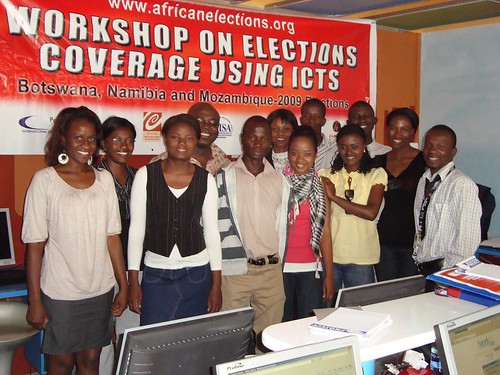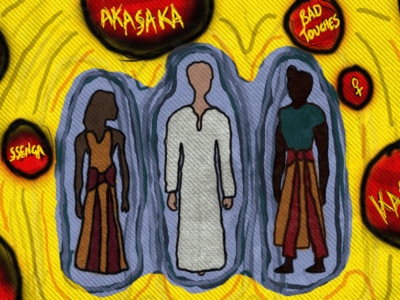The advent of multiparty democracy in much of Sub Saharan Africa during the 1990’s brought with it many developments, some of which have led to an opening for more civic participation in governance. Modeled on the basic tenets of democracy, there was a parallel growth in the number of civil society organizations calling for greater transparency and accountability from government officials. For the first time ever, citizens began to understand that they can make demands from their elected public servants. For instance, in Zambia, South Africa, Malawi, Kenya, etc, people realised another measure of freedom by voting for officials into parliaments and municipal councils.
It appears, therefore, that the era of multiparty democracy has ignited the people's desire to start demanding transparency and accountability from those they elected. The transparency movement in those years utilised several platforms at the national and local levels, including the traditional media. But with the coming of and growing access to Information and Communication Technology tools, they extended their use to such tools as the Internet and mobile phones.
It is interesting to note that generally most transparency projects stem from the civil society as they traditionally assume the role of a watchdog. Some are global while others are localised. For instance Transparency International, Amnesty International, advocacy and lobbying groups have tended to be in the lead in undertaking projects that call for government’s transparency and accountability. With the new media tools on the rise, people in Sub-Saharan Africa started turning to the web 2.0 tools in the early 2000 to put pressure on their government. For instance in 2001, Kubatana.net in Zimbabwe started in a humble manner to connect non-governmental organisations using their email directory and mailing list. In 2003, Malawi's Sustainable Development Networking Project (SDNP) began as an ISP which mostly provided services to the Malawian government of Malawi, but also ran a conversational forum for civil society organisations.
The use of portals and blogs, however, did not begin to take off in Sub-Saharan Africa until mid-2005.
Obstacles to the use of technology in the transparency movement
It should be understood that there are multiple challenges in the region facing technology for transparency projects. Among these are: poor Internet infrastructure, technophobia, high connection and connectivity costs, the lack of ICT policy in some countries, inadequate knowledge and ICT personnel. These challenges characterise most of new media situations in Sub Saharan Africa. A project called Ujima that attempts to bring transparency to the workings and spending of African governments, multinational non-governmental organizations and business enterprise in African countries says that “few African countries have freedom of information laws. Getting at this information from inside the countries can be difficult.”
The Africa i-Parliament Action Plan points out there is a lack of economic and technical resources across the continent. “Many parliaments have a weak IT department, and they do not have the capacity to design and manage the deployment of a complex parliamentary system. Most parliaments are using old systems that are the results of layers of development that are hard to maintain in isolation.”
In addition to the above, there is a lack of funding and well trained personnel to creatively keep the transparency battle afloat. Policies and government structures are changing quickly and activists need to adjust accordingly with foresight in order to introduce more transparency and accountability into the system. A visit to several websites run by civil society organizations involved in transparency, civic engagement and election issues reveals frequent lapses in updating the content of the sites, which is linked to inadequate funds and the shortage of personnel.
Why Transparency Projects
Transparency initiatives have borne fruit at various levels. For instance in Zimbabwe non-governmental organisations put pressure on the government to explain the use of the money that is collected at newly established toll booths.
Bev Clark of Kubatana.net explains they put an activist message in one of “the newsletters and asked where the money is going. The conditions of the roads in Bulawayo, Mutare, and Harare are very poor. We put this note in the newsletter to get people to think about and we asked the people to write Transparency International Zimbabwe to do something about it. Our membership rallied, mobilised and Transparency International Zimbabwe investigated and did something about it.” However, while a network of activists connected through a mailing list did mobilise to convince Transparency International Zimbabwe to investigate the use of the toll revenue, we have not been informed that the Zimbabwean government responded to the investigation, or if any instances of corruption were uncovered. Still, it is worth noting that the issue was made more visible through the use of networked communication. We recommend that future researchers follow up to measure the longterm efficacy of these efforts.
In South Africa, Kenya, Ghana and Mozambique, activists have used blogs and web portals to communicate and campaign for fair and free elections. One would imagine that their constant publishing of information related to the elections – that would otherwise not have been made public – put pressure on political parties, candidates, and election officials to ensure credibility and transparency on voting day. Unfortunately, there are too many variables to measure in any scientific way the impact of such information portals on election credibility. We posit that to publish information about elections and electoral processes in developing democracies is better than to not publish that information, but we also recognize that such projects are limited by internet penetration, which still hovers around 5% in many Sub-Saharan African countries, though that number is now increasing rapidly.
Following the successes and recognition of early projects, more Sub-Saharan Africans are demanding information through modern technologies. Higher and increasing internet penetration along with mobile phone networks enable access to civic participation for citizens who would otherwise not have access to transparency platforms.
Traditional media companies in Africa have not shown consistency in reporting on transparency issues. Being in business, there is a tendency for most media outlets to hit and run to another story, without following up on corruption-related stories. Technology for transparency projects tend to be more focused on reform and participation in governance, which over time is likely to lead to established credibility as a force against corruption and for improved governance. With specific reference to the projects I reviewed, it seems likely that they will still be around in the next three or more years. This is because they seem to have so far established a profile of success that makes them attractive for funding. However it is the creativity of their approach that might need adjustment in order to take a multi-pronged approach to effectively achieving transparency.
For instance elected officials easily attack or hit back at civil society organisations that seem to give them a tough time. In spite of claiming to be democratic societies, some governments even enact laws that would bar greater involvement of civil society in transparency initiatives and government reform.

Namibian journalists and bloggers are trained by the African Elections Project, which aims to improve coverage and monitoring of elections in Africa to improve their credibility and accountability.
It should be pointed out that the African Elections Project and Bungeni are unique in that both use creative tools to document and support the electoral and parliamentary systems. The projects have a continent-wide approach to level the playing field for the election stakeholders – and the involvement and transparency of members of parliament – respectively.
Transparency projects and traditional anti-corruption organizations
There appears to be a fight for visibility to secure an organization's survival. NGOs are known to compete for visibility, and hence collaborative efforts are often superficial. If Tech for transparency projects are to have a reaching impact in the region, then they need to introduce themselves to well-established networks of like-minded organizations and indicate what gaps they are able to fill in the larger fight against corruption, and for transparency, accountability, and civic participation.
The needs
The reviewed projects have revealed a couple of needs in Sub Saharan Africa. These include:
- The need for a well-established ICT infrastructure.
- The desire to see more freedom of expression for both citizens and the media. It is clear from the reviewed cases that that some projects do not yet have the ideal environment to operate for fear of putting government reprisal.
- It is also clear that while a good number of NGOs are pushing for the use of technology in their advocacy for transparency, there are a good number of government departments and agencies – as well as individual officials – who do not yet appreciate the role of ICTs in development, let alone in engaging citizens for the good of democracies in the region.
- Finally, the projects I reviewed have also revealed that there is a potential for their greater impact. I see civil society organizations hungering for more knowledge and skills to utilise the tools. They are aware of the tremendous benefits of networked communications in civil society, but do not have access to the skills, funding, or infrastructure to take advantage of those benefits.
Recommendations to project leaders, funders, and governments
Technology for transparency projects stand to benefit more Africans. However for this to be realised, it is necessary that the project leaders do more promotion of their projects, and aggressively and collectively lobby their governments to provide a safe working environment. The project leaders also need to be more creative in reaching out to illiterate people in rural areas. For funders, they should consider more funding towards personnel, operating costs, and technical training. It is often the case that funders give less attention to operating costs that would enable the project to work toward sustainability. The biggest assignment for most countries lies with their governments. Elected officials should deliberately introduce policies friendly to the implementation of technology for transparency projects, especially the publication of open government data and the passage of freedom of information laws. This includes the creation of a safe working environment for watchdog groups that demand more transparency and accountability from governments than officials themselves may be comfortable with. Such organizations at least have the basic right to advocate for the policies they believe in.







